 W
WDigital media means any communication media that operate with the use of any of various encoded machine-readable data formats. Digital media can be created, viewed, distributed, modified, listened to, and preserved on a digital electronics device. Digital can be defined as any data represented by a series of digits, while media refers to methods of broadcasting or communicating these information. Together, digital media refers to mediums of digitized information broadcast to us through a screen and/or a speaker. This also includes text, audio, video, and graphics that are transmitted over the internet for viewing or listening to on the internet.
 W
WA 5D DVD is an optical disc being developed by Peter Zijlstra, James Chon and Min Gu at the Swinburne University of Technology in Melbourne, Australia. In 2009, the developers estimated that the technology could be commercially ready in five to ten years.
 W
WAir Mail is a digital weekly launched in July 2019 by former Vanity Fair editor-in-chief Graydon Carter and former New York Times reporter Alessandra Stanley. Private equity firm TPG Capital served as Air Mail's majority investor.
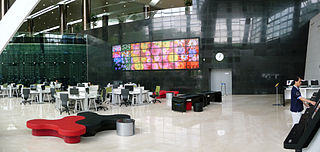 W
WBookless libraries are public, academic and school libraries that do not have any printed books. Instead they offer all-digital collections of literary works, reading material and scientific and academic research material. A bookless library typically uses the space that would have once been used for books to offer public computers, e-readers and other technology used to consume and produce digital media. Over the last decade, driven by changes in scholarly communication, several major research libraries have successfully become bookless.
 W
WBrat TV is a digital media network, which was launched in 2017 and is available on YouTube. The network features original shows and is intended for teenagers. The original script features popular teenage social media celebrities in videos ranging from six to twenty-five minutes long. Brat's flagship web series, Chicken Girls, featured many social media influencers. A subsequent movie, based on Chicken Girls, was released later titled as Chicken Girls: The Movie. Brat has also produced shows starring numerous teenage TV and movie stars from Disney Channel and Nickelodeon, such as Jules LeBlanc, Anna Cathcart, Francesca Capaldi, and Emily Skinner.
 W
WCanadian online media is content aimed at a Canadian audience through the medium of the Internet. Presently, online media can be accessed by computers, smart-phones, gaming consoles, Smart TVs, MP3 players, and tablets. The characteristics of Canadian online media are strongly shaped by the Canadian communications industry, even though their statistics and findings are more often than not associated with American research. Large media companies are increasingly on the move to start up online platforms for news and television content. The exponential growth of Canadians' dependency on online content for entertainment and information has been evident in the recent decades. However, it has proven slow for Canadian online media to catch up with the constant increase of American online media. Regardless of medium, entertainment and information hubs are not solely focusing on satisfying the audience they have, but are also heavily expanding their reach to new global audiences.
 W
WCentro Digital Pictures Limited is a visual special effects and animations company based in Hong Kong that provides visual effects for film, interactive media and video games.
 W
WPaul Korver is an American entrepreneur, filmmaker, and producer, who currently resides in Los Angeles. With early turns as an actor in his twenties, in 2002 he returned to his early love of cinematography, founding Fifty Foot Films and later Cinelicious.
 W
WDigital cinematography is the process of capturing (recording) a motion picture using digital image sensors rather than through film stock. As digital technology has improved in recent years, this practice has become dominant. Since the mid-2010s, most movies across the world are captured as well as distributed digitally.
 W
WKen Coates is a Canadian historian focused on the history of the Canadian North and Aboriginal rights and indigenous claims. His other areas of specialization include Arctic sovereignty; science, technology and society, with an emphasis on Japan; world and comparative history; and post-secondary education. Coates is a professor and Canada Research Chair in Regional Innovation, Johnson Shoyama Graduate School of Public Policy, and Director, International Centre for Northern Governance and Development at the University of Saskatchewan. In 2015, Coates was elected as a Fellow of the Royal Society of Canada.
 W
WThe Culture of Connectivity: A Critical History of Social Media is a book by José van Dijck published by Oxford University Press in 2013 on social media platforms and their history. The author considers the histories of five social media platforms: Facebook, Twitter, Flickr, YouTube, and Wikipedia. She focuses on how their technological, social and cultural dimensions contribute to their current status.
 W
WCyber-Duck is a digital transformation agency founded in 2005 and based in Elstree, United Kingdom. The company specialises in user experience (UX), software development and digital optimisation.
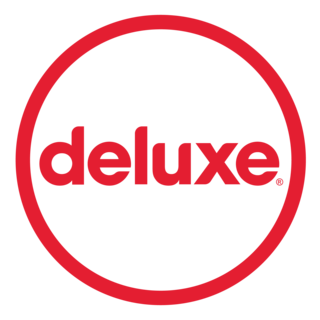 W
WDeluxe Media Inc., formerly Deluxe Entertainment Services Inc. is an American media company whose clients include motion picture groups, television studios, digital content providers, and advertising agencies. The company has been recognized with ten Academy Awards for scientific and technical achievement, including developments in CinemaScope pictures and, more recently, for a process of creating archival separations from digital image data. Founded in 1915 by producer William Fox, Deluxe's headquarters are in Los Angeles and New York, with operations in 25 media markets worldwide.
 W
WA digital citizen is a person using information technology (IT) in order to engage in society, politics, and government. As defined by Karen Mossberger, one of the authors of Digital Citizenship: The Internet, Society, and Participation, digital citizens are "those who use the internet regularly and effectively." They also have a comprehensive understanding of digital citizenship, which is the appropriate and responsible behavior when using technology. Since digital citizenship evaluates the quality of an individual's response to membership in a digital community, it often requires the participation of all community members, both visible and those who are less visible. A large part in being a responsible digital citizen encompasses digital literacy, etiquette, online safety, and an acknowledgement of private versus public information.
 W
WDigital content is any content that exists in the form of digital data. Also known as digital media, digital content is stored on digital or analog storage in specific formats. Forms of digital content include information that is digitally broadcast, streamed, or contained in computer files. Viewed narrowly, digital content includes popular media types, while a broader approach considers any type of digital information as digital content.
 W
WDigital data, in information theory and information systems, is information represented as a string of discrete symbols each of which can take on one of only a finite number of values from some alphabet, such as letters or digits. An example is a text document, which consists of a string of alphanumeric characters. The most common form of digital data in modern information systems is binary data, which is represented by a string of binary digits (bits) each of which can have one of two values, either 0 or 1.
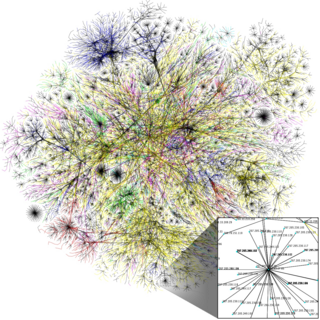 W
WThe digital divide is an economic and social inequality with regard to access to, use of, or impact of information and communication technologies (ICT). Factors causing the divide can vary depending on the country and culture, as can the potential solutions for minimizing or closing the divide.
 W
WDigital goods or e-goods are intangible goods that exist in digital form. Examples include Wikipedia articles; digital media, such as e-books, downloadable music, internet radio, internet television and streaming media; fonts, logos, photos and graphics; digital subscriptions; online ads ; internet coupons; electronic tickets; electronically treated documentation in many different fields; downloadable software and mobile apps; cloud-based applications and online games; virtual goods used within the virtual economies of online games and communities; workbooks; worksheets; planners; e-learning ; webinars, video tutorials, blog posts; cards; patterns; website themes; templates.
 W
WDigital media in education refers to the use of interactive multimedia in the classroom setting. Digital media involves incorporating multiple digital softwares, devices, and platforms as a tool for learning. The use of digital media in education is growing rapidly in today's age. They compete with books as the leading means of communication in the classroom which is more than ever before. This form of education is slowly combating the traditional forms of education that have been around for a long time. With the introduction of virtual education, there has been a need for more incorporation of other digital platforms in online classrooms.
 W
WA digital omnivore is a term meant to capture the multiple modalities that consumers use to access the Internet, reflecting "the popularization of smartphones and the introduction of tablets and other web-enabled devices that allow consumers to access media content through several touch-points during the course of their daily digital lives." As people increasingly own mobile devices, cross-platform multimedia consumption has continued to shape the digital landscape, both in terms of the type of media content they consume and how they consume it.
 W
WDigital signage is a sub-segment of electronic signage. Digital displays use technologies such as LCD, LED, projection and e-paper to display digital images, video, web pages, weather data, restaurant menus, or text. They can be found in public spaces, transportation systems, museums, stadiums, retail stores, hotels, restaurants and corporate buildings etc., to provide wayfinding, exhibitions, marketing and outdoor advertising. They are used as a network of electronic displays that are centrally managed and individually addressable for the display of text, animated or video messages for advertising, information, entertainment and merchandising to targeted audiences.
 W
WThe sociology of the Internet involves the application of sociological theory and method to the Internet as a source of information and communication. The overlapping field of digital sociology focuses on understanding the use of digital media as part of everyday life, and how these various technologies contribute to patterns of human behavior, social relationships, and concepts of the self. Sociologists are concerned with the social implications of the technology; new social networks, virtual communities and ways of interaction that have arisen, as well as issues related to cyber crime.
 W
WA digital studio provides both a technology-equipped space and technological/rhetorical support to students working individually or in groups on a variety of digital projects, such as designing a web site, developing an electronic portfolio for a class, creating a blog, selecting images for a visual essay, or writing a script for a podcast.
 W
WJohanna Francisca Theodora Maria "José" van Dijck is a new media author and a distinguished university professor in media and digital society at Utrecht University since 2017. From 2001 to 2016 she was a professor of Comparative Media Studies where she was the former chair of the Department of Media Studies and former dean of the Faculty of Humanities at the University of Amsterdam. She is the author of ten (co-)authored and (co-)edited books including Mediated Memory in the Digital Age; The Culture of Connectivity.; and The Platform Society. Public Values in a Connective World. Her work has been translated into many languages and distributed to a worldwide audience.
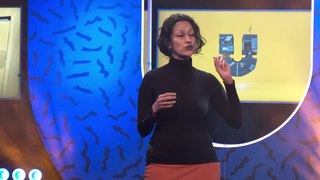 W
WThe global digital divide describes global disparities, primarily between developed and developing countries, in regards to access to computing and information resources such as the Internet and the opportunities derived from such access. As with a smaller unit of analysis, this gap describes an inequality that exists, referencing a global scale.
 W
WThe DVD is a digital optical disc data storage format invented and developed in 1995 and released in late 1996. The medium can store any kind of digital data and was widely used for software and other computer files as well as video programs watched using DVD players. DVDs offer higher storage capacity than compact discs while having the same dimensions.
 W
WEconomía Feminista, in English: Feminist Economics, is an Argentinian digital media, focused on disclosure and creation of economics information about the gender gap. The media is managed by Mercedes D`Alessandro, Magalí Brosio, Violeta Guitart and Agurtzane Urrutia.
 W
WFutureMedia is a collaborative initiative at Georgia Tech and the Georgia Tech Research Institute to analyze the state and future of digital, social, and mobile media. Georgia Tech has around 500 faculty members working in those fields.
 W
WThe Höhere Graphische Bundes-Lehr- und Versuchsanstalt (HGBLuVA), now commonly known as "die Graphische", founded in 1888 in Vienna, is a vocational college for professions in visual communication and media technology in Austria.
 W
WHoopla is a web and mobile (Android/iOS) library media streaming platform for audio books, comics, e-books, movies, music, and TV. Patrons of libraries that support Hoopla have unlimited access to its collection of digital media.
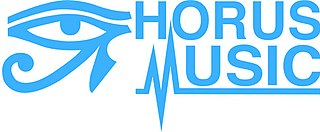 W
WHorus Music Limited is a global digital distribution and label services company. Established in 2006, Horus Music allows artists, labels and right-holders to send their music to over 200 download, streaming, and interactive platforms including iTunes, Google Play, Amazon, VEVO, 7digital, Spotify, Beatport, Deezer, Tidal, as well as offering digital marketing and playlisting opportunities.
 W
WG. H. Hovagimyan is an experimental cross media, new media and performance artist who lives and works in New York City.
 W
WThe Information Age is a historical period that began in the mid-20th century, characterized by a rapid epochal shift from the traditional industry established by the Industrial Revolution to an economy primarily based upon information technology. The onset of the Information Age can be associated with the development of transistor technology.
 W
WThe LaserDisc (LD) is a home video format and the first commercial optical disc storage medium, initially licensed, sold and marketed as MCA DiscoVision in the United States in 1978. Its diameter typically spans 30 centimetres. Unlike most optical disc standards, LaserDisc is not fully digital and instead requires the use of analog video signals.
 W
WM-DISC is a write-once optical disc technology introduced in 2009 by Millenniata, Inc. and available as DVD and Blu-ray discs.
 W
WMultichannel Audio Digital Interface (MADI) standardized as AES10 by the Audio Engineering Society (AES) defines the data format and electrical characteristics of an interface that carries multiple channels of digital audio. The AES first documented the MADI standard in AES10-1991, and updated it in AES10-2003 and AES10-2008. The MADI standard includes a bit-level description and has features in common with the two-channel AES3 interface.
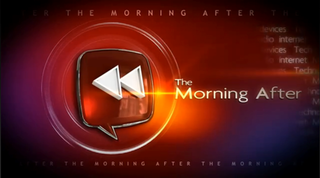 W
WThe Morning After is a Hulu original web series that premiered on January 17, 2011 and ended April 24, 2014. It was produced by Hulu and Jace Hall's HDFilms, streaming Monday through Friday. The show originally featured Brian Kimmet and Ginger Gonzaga as hosts. Later shows used a rotation of hosts including Alison Haislip, Dave Holmes, Damien Fahey, Bradley Hasemeyer, Haley Mancini, Paul Nyhart, and Rachel Perry.
 W
WA motion picture film scanner is a device used in digital filmmaking to scan original film for storage as high-resolution digital intermediate files.
 W
WMX1 was a global media services provider founded in July 2016 from a merger between digital media services companies, RR Media and SES Platform Services, and a wholly owned subsidiary of global satellite owner and operator, SES.
 W
WA news ticker is a horizontal or vertical text-based display either in the form of a graphic that typically resides in the lower third of the screen space on a television station or network or as a long, thin scoreboard-style display seen around the facades of some offices or public buildings dedicated to presenting headlines or minor pieces of news. It is an evolution of the ticker tape, a continuous paper print-out of stock quotes from a printing telegraph which was mainly used in stock exchanges before the advance of technology in the 1960s.
 W
WAn online exhibition, also referred to as a virtual exhibition, online gallery, cyber-exhibition, is an exhibition whose venue is cyberspace.
 W
WThe Open Rights Group (ORG) is a UK-based organisation that works to preserve digital rights and freedoms by campaigning on digital rights issues and by fostering a community of grassroots activists. It campaigns on numerous issues including mass surveillance, internet filtering and censorship, and intellectual property rights.
 W
WPersonal media are media of communication which are used by an individual rather than by a corporation or institution. They are generally contrasted with mass media which are produced by teams of people and broadcast to a general population. In other words, personal media allow individuals, as opposed to corporate entities, to contribute knowledge and opinion to the public. The term dates from the 1980s.
 W
WThe Prix Ars Electronica is one of the best known and longest running yearly prizes in the field of electronic and interactive art, computer animation, digital culture and music. It has been awarded since 1987 by Ars Electronica.
 W
WPureWow is an American digital media company that publishes women's lifestyle content. Acquired by serial entrepreneur Gary Vaynerchuk in 2017 as part of Gallery Media Group, PureWow tailors lifestyle topics for Millennials and Generation X, including fashion, beauty, home decor, recipes, entertainment, travel, technology, literature, wellness and money.
 W
WRR Media was a NASDAQ listed provider of global digital media services to the broadcast industry and content owners. Its services can be divided into four main groups: global content distribution network ; content management & playout; sports, news & live events; and online video services.
 W
WMirko Tobias Schäfer is a media scholar at Utrecht University. He is an Associate Professor for New Media and Digital Culture and directs the Utrecht Data School.
 W
WStreaming television is the digital distribution of television content, such as TV shows, as streaming media delivered over the Internet. Streaming TV stands in contrast to dedicated terrestrial television delivered by over-the-air aerial systems, cable television, and/or satellite television systems. The use of streaming online video and streaming television is concentrated on streaming video on demand platforms such as Netflix, Tubi, Crackle, Hulu, Amazon Prime Video, HBO Max, Vudu, Showmax, Peacock, Disney+, Apple TV+, BET+, and Paramount+.
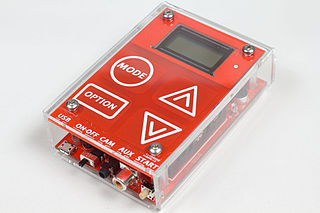 W
WTriggertrap was a company that created hardware and software products centred on triggering SLR cameras. Products included several Arduino-based camera triggers, along with mobile apps which interfaced with cameras using a device that plugs into the headphone socket of the smartphone or tablet. In May 2012, Triggertrap introduced Triggertrap Mobile for iOS, followed by a version for Android in September 2012. Triggertrap Mobile utilized the sensors and processing power of a smartphone or tablet running IOS to trigger cameras based on sound, motion, vibration, or location, in addition to timelapse, bulb ramping, and other features. Triggertrap ceased trading on the 31st of January 2017. His Founder CEO was the Dutch photographer Haje Jan Kamps.
 W
WA variable- message sign, often abbreviated VMS, CMS, or DMS, and in the UK known as a matrix sign, is an electronic traffic sign often used on roadways to give travelers information about special events. Such signs warn of traffic congestion, accidents, incidents such as terrorist attacks, AMBER/Silver/Blue Alerts, roadwork zones, or speed limits on a specific highway segment. In urban areas, VMS are used within parking guidance and information systems to guide drivers to available car parking spaces. They may also ask vehicles to take alternative routes, limit travel speed, warn of duration and location of the incidents, inform of the traffic conditions, or display general public safety messages.
 W
WVHS is a standard for consumer-level analog video recording on tape cassettes.
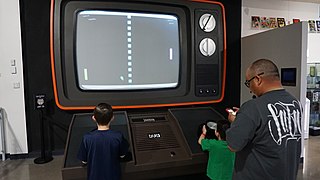 W
WA video game or computer game is an electronic game that involves interaction with a user interface or input device – such as a joystick, controller, keyboard, or motion sensing device – to generate visual feedback. This feedback is shown on a video display device, such as a TV set, monitor, touchscreen, or virtual reality headset. Video games are often augmented with audio feedback delivered through speakers or headphones, and sometimes with other types of feedback, including haptic technology.
 W
WWeb science is an emerging interdisciplinary field concerned with the study of large-scale socio-technical systems, particularly the World Wide Web. It considers the relationship between people and technology, the ways that society and technology co-constitute one another and the impact of this co-constitution on broader society. Web Science combines research from disciplines as diverse as sociology, computer science, economics, and mathematics.
 W
WWith Samina Peerzada is a Pakistani web television talk show hosted by Samina Peerzada that first aired on December 22, 2017 on YouTube. The series was created by Peerzada in collaboration with Muhammad Adnan Butt, CEO Dot Republic Media. Each episode is separately sponsored and features a Pakistani celebrity interviewed by Peerzada about their journeys, struggles, challenges and success. Each season is titled differently.